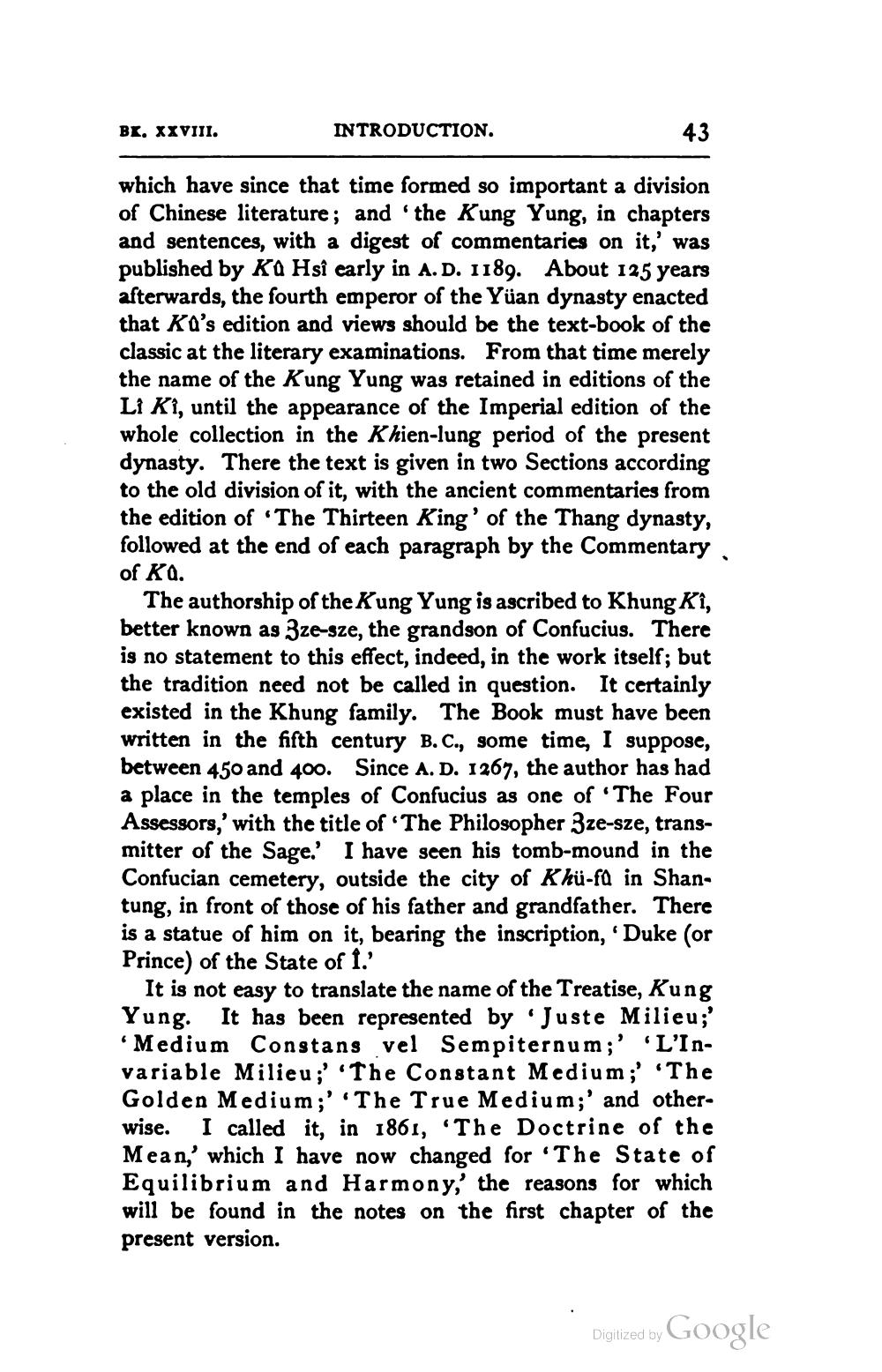________________
BL, XXVIII.
INTRODUCTION.
43
which have since that time formed so important a division of Chinese literature; and 'the Kung Yung, in chapters and sentences, with a digest of commentaries on it,' was published by Ka Hsi early in A. D. 1189. About 125 years afterwards, the fourth emperor of the Yuan dynasty enacted that Ko's edition and views should be the text-book of the classic at the literary examinations. From that time merely the name of the Kung Yung was retained in editions of the Li Ki, until the appearance of the Imperial edition of the whole collection in the Khien-lung period of the present dynasty. There the text is given in two Sections according to the old division of it, with the ancient commentaries from the edition of 'The Thirteen King' of the Thang dynasty, followed at the end of each paragraph by the Commentary, of Ka.
The authorship of the Kung Yung is ascribed to Khung Ki, better known as Zze-sze, the grandson of Confucius. There is no statement to this effect, indeed, in the work itself; but the tradition need not be called in question. It certainly existed in the Khung family. The Book must have been written in the fifth century B.C., some time, I suppose, between 450 and 400. Since A. D. 1267, the author has had a place in the temples of Confucius as one of The Four Assessors,' with the title of The Philosopher Zze-sze, transmitter of the Sage.' I have seen his tomb-mound in the Confucian cemetery, outside the city of Khü-fd in Shantung, in front of those of his father and grandfather. There is a statue of him on it, bearing the inscription, 'Duke (or Prince) of the State of 1.
It is not easy to translate the name of the Treatise, Kung Yung. It has been represented by Juste Milieu;' "Medium Constans vel Sempiternum;' 'L'Invariable Milieu ;' The Constant Medium;' "The Golden Medium;' The True Medium;' and other. wise. I called it, in 1861, 'The Doctrine of the Mean,' which I have now changed for 'The State of Equilibrium and Harmony,' the reasons for which will be found in the notes on the first chapter of the present version.
Digitized by Google




